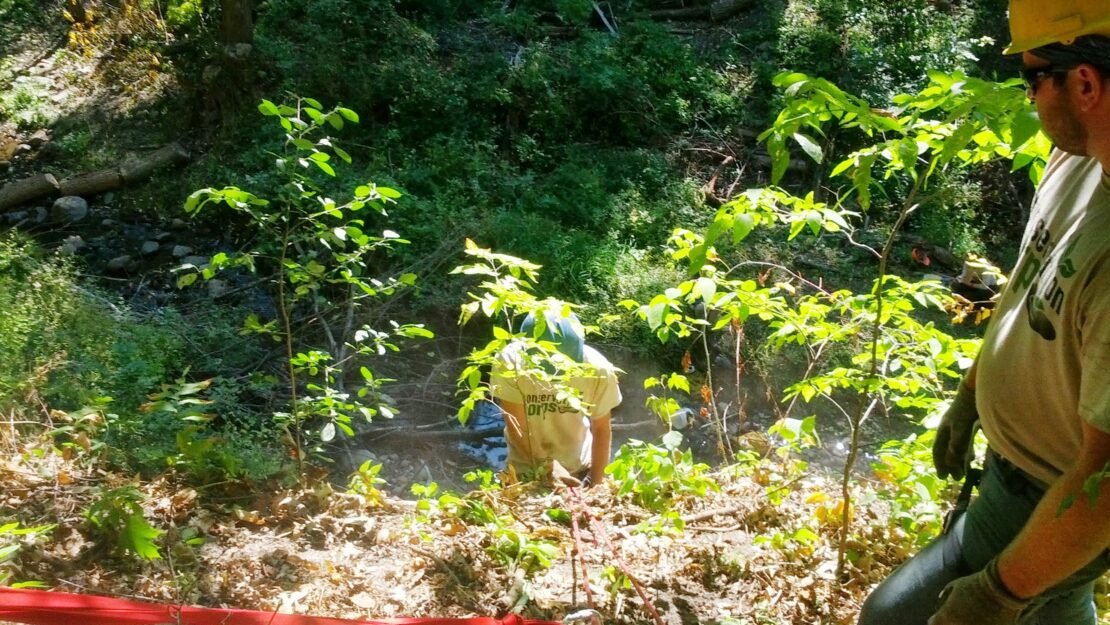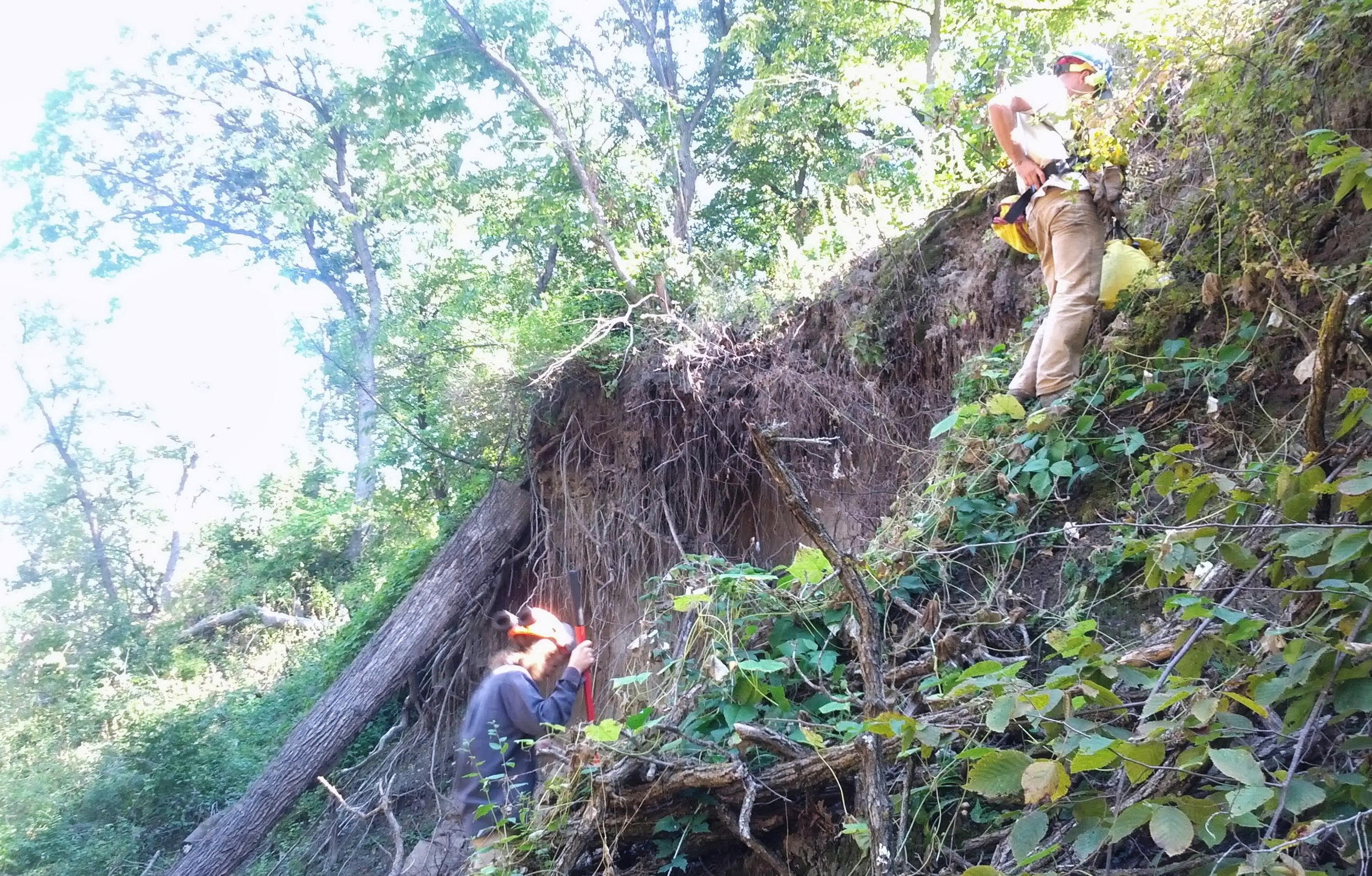Projects set in motion


By: Nick Cox
As we go week to week working on different projects, it’s easy to consider our work done, the projects finished. This makes sense for most projects; you paint your walls and they’re painted until you paint them again, you build a deck and it’s there until you remove it. When working with nature, as we typically do at the Conservation Corps, it turns out projects are rarely done. When we remove invasives like garlic mustard, plant and maintain rain gardens, or fall sick or problematic trees we might consider each project done when we move on to something else. But these projects are never done, ask anyone who’s set out to remove buckthorn from their property if they’ve finished their project yet. What we do is set these projects in motion.
Now this probably does and should seem obvious to anyone who’s worked with or experienced a significant amount of what we call the forces of nature. Yet it still surprises me every time. In recent months, my crew mates and I have been lucky enough to return to projects that we worked on earlier in the season. Just this week we have been doing maintenance on rain gardens in Stillwater, similar work that we did in the same gardens in May. I remember pulling weeds and removing dead materials from these same gardens in May and thinking to myself “This is a rain garden? There aren’t any plants and the basins are full of muck, there’s no way these things drain water.” What I’m seeing now, just four months later, are lush gardens full of good plants with surprisingly few bad (aka weeds). Saturday’s rain, less than 48 hours previous, was completely drained by Monday morning. It’s fulfilling to see that our work in May has paid off so generously, that our preseason maintenance set this project in motion, and that handing the project over to the forces of nature resulted in such a success. Of course the project continues, next spring more undesired seeds will germinate early in the race for sunlight and more street muck will gather in the bottom of the gardens. But I can now attest that when we collaborate with nature the project can continue to succeed.

For the two weeks prior, we also had the chance to revisit an ongoing project to which we had previously contributed. At Glen Creek in Fridley, a storm water runoff stream has been aggressively eroding the hillside leading to sediment loading into the Mississippi as well as landslide-like events that bring the valley’s edge closer and closer to landowners’ homes and backyards. Weeks were spent felling problematic trees so that their roots would stay put and hold soil rather than these leaning, top-heavy trees falling down during erosion events and the roots tearing out the hillside as they fell. The tree trunks and bundles of their branches were placed parallel along the hillside to act as erosion guards that would prevent falling sediment from reaching the creek. Our crew leader, Mike, had done work on the project almost a year ago, and we could see the effects of their work; the erosion guards worked well as we could see soil that had gathered on their uphill sides. Earlier in 2013, our crew and Shakopee’s worked on the project, building additional erosion guards and sowing seeds of deep-rooting grasses in test plots. During our most recent visit this September, we surveyed the work that nature had done since we’d last seen the area and we found that the seed took well in the test plots. We completed our part of the project by bringing down the remaining problem trees and sowing seeds along the entire valley and steep sandy cliffs. Having talked with adjacent homeowners and witnessing the sheer power of the creek during and afternoon rain storm, this has been deemed a must-visit-again project site by our entire crew. Nature is working on both sides of this project, and we can only hope that we’ve set enough in motion that it will ultimately be a success.
This work continually affords me awe and inspiration at the natural world and how we participate in it and interact with it. I hope it is becoming more and more clear to policy-makers, scientists, and citizens alike that nature is a force with which we must do just that – participate in and interact with – so that future generations will have the ability to have the same connections with the outdoors that we’ve enjoyed up to this point.
We’ve also had the opportunity to revisit a site at which we spent our first few weeks of the term treating buckthorn. But I don’t want to talk about that. Oh, the humanity.